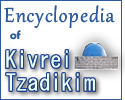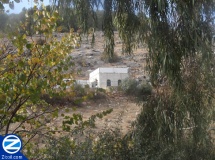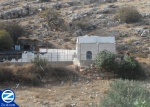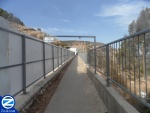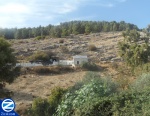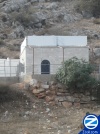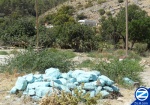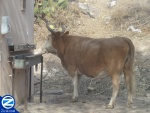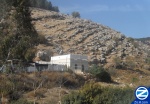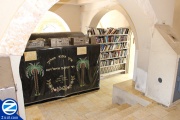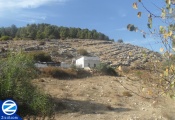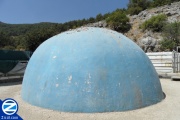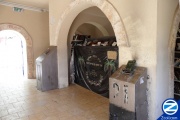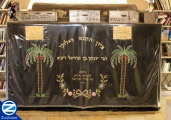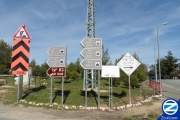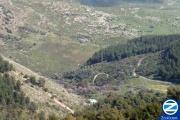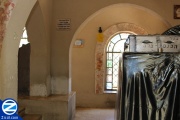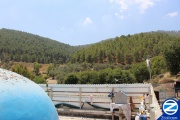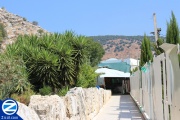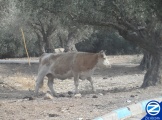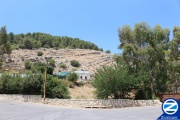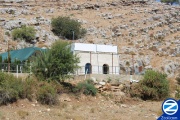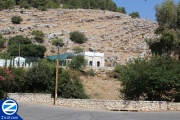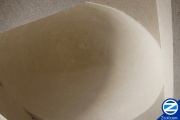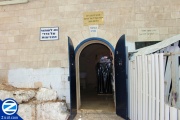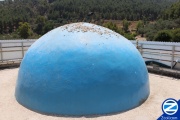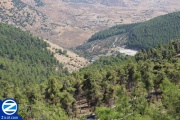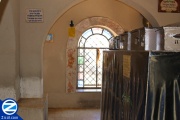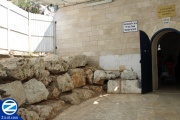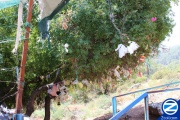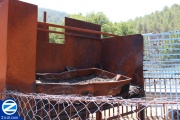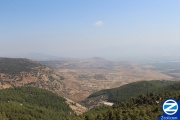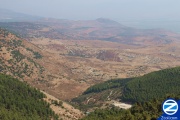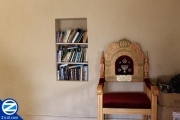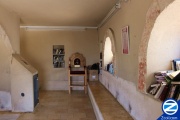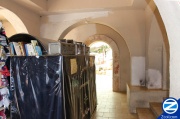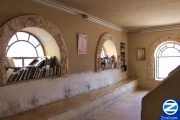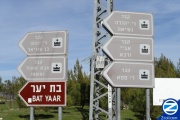Kever Yonatan Ben Uziel Amuka
Amuka, located on the western edge of the Biriya forest, contains the ancient gravesite of the Talmudic scholar Rabbi Yonatan Ben Uziel. Tradition relates that singles who pray at the gravesite of this Tanah will find their “zivug” -- true soulmate. The site attracts many singles, both men and women, of all ages and levels of Jewish practice.
Contents |
[edit] Rabbi Yonatan Ben Uziel
Rabbi Yonatan Ben Uziel was a student of Hillel the Elder and lived in the first century A.D. In the Talmud tractate Sukkah it is written that when birds flew over his head they burned due to the presence of the angels who came to hear Yonason Ben Uziel study Torah.Yonason Ben Uziel is best known for his Translation of the Prophets, the “Targum, into Aramaic, the vernacular of his day. The Talmud tractate Megilla writes that he planned to author a translation and commentary on the Ketuvim as well but the heavens prevented this from happening because they did not want him to reveal the secrets of the final redemption.
![]() Read full Zissil article on Yonasan Ben Uziel
Read full Zissil article on Yonasan Ben Uziel
[edit] Tradition Regarding Marriage
Jewish tradition relates that Yonatan Ben Uziel never married because he preferred to dedicate all of his time to his Torah studies. Toward the end of his life he regretted this, so in order to encourage marriages he gave a blessing that all those who are unmarried will find their soulmates within a period of one year if they visit his resting place. His gravesite at Amuka is a compelling pilgrimage site for singles who pray that, through Rabbi Ben Uziel’s intervention in the heavens, they will meet their soulmate.[edit] Stories
Stories abound regarding individuals who pray at Amuka seeking a match. A number of stories revolve around people who intentionally “forgot” their “siddur” -- prayer book -- with their name and contact details. The siddur was picked up and contact was initiated with a possible match. Other singles who had searched for their match for many years describe miraculously meeting someone very soon after their visit to Amuka and consider Yonason ben Uziel to be their Shadchan.[edit] Proxy
Within Jewish tradition, it is customary for people who cannot themselves visit a holy site to commission someone to do so in their place. This generally involves paying someone to pray on their behalf. A number of people in Tzfat are prepared to undertake this mission and pray at Yonatan Ben Uziel’s gravesite on behalf of others.
[edit] Hillulah of Yonason ben Uziel
The Hillulah of Yonason be Uziel falls out on the Chaf Vav Sivan, the 26th of the month. Each year thousands of people visit the Kever throughout this 24 hour period and the surrounding three days. A number of organizations set up stands in the vicinity of the Kever to try to fundraise money. Often there is food given out for free at the Hillulah sponsored by private donors.
[edit] The Tomb
Amuka is located outside of Tzfat in the Biriya forest, along the road that goes by the Bat Ya’ar Ranch. There is also a small village, called “Amuka” consisting of several dozen families, within a few minutes walk of the gravesite.Kever Yonasan Ben Uziel is located on the side of the mountain, west of the ancient village.
[edit] Early Pilgrims
Many diaries of early travelers to Eretz Yisroel describe visits to Kever Yonatan Ben Uziel, the earliest dating back to the 1100's. These describe the grave being near a small Arab village containing roughly sixty houses. The actual Tzion was built from stones with a large, thick beautiful tree growing over it.
[edit] Tzion Yonasan Ben Uziel
In the 1500's Kever Yonasan Ben Uziel was renovated by Rabbi Shem Tov Even Gaon, one of the earliest Kabbalists of Tzfat that originated from Spain, author of the the Migdal Oz on the Rambam, Keser Shem Tov, Badi Haron and Migdal Chananel. Together with some wealth Italian Jews residing in Tzfat at the time, Rabbi Shem Tov built a nice Tzion around the Kever made from solid rectangular stones.In 1979 the Tzion was once again renovated and expanded. During the construction part of the original stone coffin was uncovered.
[edit] Tree Above the Tzion
Many early visitors to Kever Yonatan Ben Uziel describe a large beautiful tree growing right above the Tzion. Eventually this tree was chopped down by the local Arab governor he needed a large beam for the new house he was building. Within eight days after its completion, the house collapsed upon the Governor, killing him and his entire family. Awe stricken, the Arabs of the Amuka collected the remaining scraps of the tree and brought them back, placing them by the Kever.
[edit] Kever Mokrat
Near Kever Yonatan Ben Uziel Amuka is the grave of the Tana or Amaroa Mokrat who is also known as Dman Mokras.[edit] Respected by Muslims
Diaries of early visitors to the Kever note how the location was respected by the local Muslim population. Muslims would come to the Kever to light oil and make pledges in honor of Yonasan Ben Uziel. They would refer to the grave as the tomb of Muhamad Al Ajami, literally "Saint not from our nation". There are a number of Muslim graves in the vicinity of the Kever, another sign that it was awed by the Arabs.
[edit] Amuka Cows
There are many cows that roam around in Amuka, often in the vicinity of the Kever.[edit] Directions
Geographic Coordinates
- Latitude: 33.005357
- Longitude: 35.518980
A trail also leads out of the Old City to Amuka. Hikers are advised to obtain a good map or directions before embarking on the walk.
[edit] More Photos
- Kever Rabbi Yonasan ben Uziel Photo Gallery

